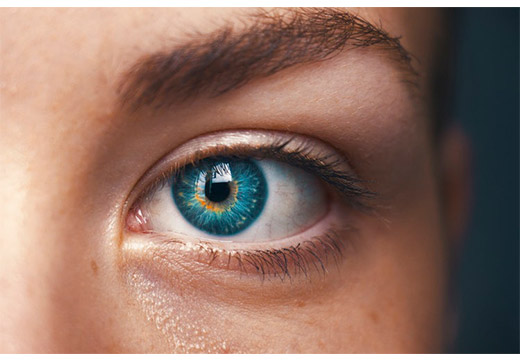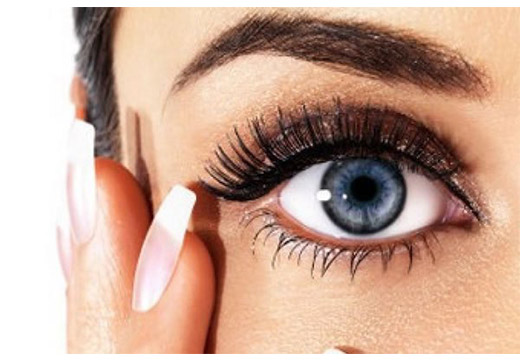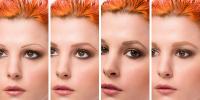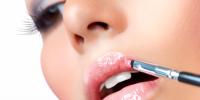Technology for painting eyelashes at home: choosing and applying paint, coloring and subsequent care
The rhythm of life does not always allow a woman to spend a lot of time on makeup, visit beauty salons. The problem can be solved if you dye your eyelashes at home. The procedure is simple, the result will last for a long time.
Before proceeding with staining, it is worth weighing all the pros and cons. Benefits of the home procedure:
- financial availability. Only necessary materials are paid.
- Ease of planning. You can dye eyelashes at any suitable time, regardless of the schedule of the salon.
- Individual selection of cosmetics, confidence in the quality of this product. Trusting the master, the client does not know what tool he uses, how safe it is.
- You can do allergy tests yourself, choose the right paint.
- Freedom of choice - use the colors you like, experiment, express yourself.
Flaws:
- Danger of paint getting into eyes.
- Due to inexperience, there is a risk of damaging the eyelashes and thin skin of the eyelids.
- The desired result may not work right away; it will take several attempts to find your shade.
- Unwanted staining of adjacent skin, difficult to control the process on your own.
home painting technology
To successfully dye your eyelashes at home by yourself, you need to be well prepared. First of all, choose the right color. Buy the right tool, accessories. Prepare a convenient place and conditions for the procedure. Good lighting and running water are required. Arrange everything you need at your fingertips.

The choice of paint and its shade
Important rule: do not use hair dye! Only specialized tools will do.
One of the popular dyes of this kind is henna. It has been used since ancient times and is still relevant today. This is a natural plant product, Lavsonia powder. It is hypoallergenic, except for cases of individual intolerance, safe for human health, suitable for frequent use. It has antiseptic and medicinal properties. Can be used to restore and strengthen hairs. Easily removed with burdock oil. It is stored for a long time without preservatives, there is no danger of the development of pathogenic microorganisms. Henna should not be mixed with artificial dyes.
Traditionally, for long-term staining of eyelashes, basma is used from natural raw materials - indigo plants. It contains vitamins, natural growth stimulants that strengthen the hair structure. Means is safe, does not cause an allergy, is stored for a long time. Compared to henna, it irritates the mucous membrane more strongly, basma is more resistant, instantly stains the skin upon contact.
The main disadvantage of natural dyes is that they are produced and sold in the form of powders. Before use, you need to make a mushy consistency from them yourself.
Many cosmetics manufacturers produce ready-made permanent eyelash dyes complete with the necessary accessories. Gels are popular. Each comes with clear, step-by-step instructions for easy use. It is best to buy paint in specialized departments, where several brands of different price categories are represented, including professional lines. Before buying, you need to carefully study the composition of the product, exclude substances that can provoke allergic reactions, irritation, and harm health. Aniline is dangerous, it can cause loss of vision. Preference should be given to natural coloring pigments, to exclude chemical preservatives and fragrances.
When choosing a tone, you need to be guided by your color type of appearance and skin tone of the face, the eyelashes need only be emphasized a little. They should be in harmony with the whole look, give expressiveness to the look. If you have blond hair of a cold tone, you should choose gray colors, brown-haired women and redheads with a dark type will suit various shades of brown, swarthy brunettes - black. In order for the shade of the eyelashes to perfectly match the undertone of the skin and hair, we recommend using the following tips:
- Correctly selected color of the paint should be one tone darker than the natural color of the eyelashes.
- It looks more natural if the color of the eyebrows is one tone lighter than the eyelashes.
- Eyebrows and eyelashes can be only two shades darker than the natural color of the hair.

Preparation for the procedure
To dye eyelashes at home, auxiliary devices are needed:
- a small cup made of glass or ceramic, the metal can enter into a chemical reaction with the active substances of the composition;
- paint brushes or cotton swabs. You can thoroughly wash and dry the brush from the finished mascara in advance;
- cotton wool - semicircular blanks or cotton pads cut in half;
- polyethylene gloves to protect hands, rubber medical ones are suitable;
- baby or other greasy cream, you can use petroleum jelly.
Prepare your face:
- Remove make-up and cleanse the skin with special products: gentle soap solution, soft foam, micellar water. Bar soap and shower gel should not be used.
- Wash thoroughly, pat skin dry with a towel.
- Do not use alcohol-containing tonics and lotions, wet wipes, cologne.
Prepare the coloring agent in a mixing bowl. Industrial paints are supplied with a thinner, recipes indicating proportions and a description of the sequence of actions. Means for coloring from natural raw materials must be prepared independently. Henna is diluted with nettle infusion to the consistency of sour cream. Basma can be diluted with ordinary water, but a few drops of chamomile decoction will make the color brighter. A pinch of sugar dissolved in water will help to spread the mixture more easily. For even coloring, it is recommended to add a little glycerin.
Folk recipes:
- to get black, you need to take henna and basma in a combination of 1: 2;
- if you add a little, at the tip of a knife, natural ground coffee to this mixture, the paint will acquire a rich chestnut hue;
- equal proportions of henna and basma will give a brown color;
- to get reddish or light brown tones, you need to take more henna, reducing the amount of basma (2: 1);
- if you prepare a thick solution of these milk-based powders, you get a restorative and strengthening agent for eyelashes with a healing effect.
Coloring
It is easier to use ready-made creamy or gel products - just follow the attached instructions step by step.
You need to color hair at home in stages:
- Apply a thick layer of oily cream on the skin around the eyes and eyelids, without touching the hairs.
- On the lower eyelid, to the lash line, put a cotton blank.
- Apply paint with a brush - first the lower ones, then the upper ones along the entire length, as ink is usually applied.
- It is worth painting carefully, closer to the root, so that the hair is covered with the product from all sides.
- Close your eyes tightly and generously smear the eyelashes with paint from above, the excess will fall on the cotton wool.
- Let dry. Each tool must be kept for a certain period indicated in the attached manual, on average - 15-25 minutes.
- Part of the solution will be absorbed into the hairs, remove the remnants together with the padded cotton pad, rinse with plenty of water.
- Erase traces of cream with cotton wool.
- Wash thoroughly without detergents.
- Dry your face with a towel - do not rub your eyes.
- Brush eyelashes with a special brush.
- On the edge of the periosteum with the pad of the little finger, gently drive in the cream for the skin around the eyes.
If you decide to dye your eyelashes with your own chosen paint at home, it is recommended that you first do the procedure on one eye, and then on the second. Usually, one session is enough to achieve persistent pigmentation, the result will last up to 2 months. Henna staining can be repeated after a week, the maximum effect is achieved in 4 times.
Precautionary measures
Despite the fact that natural dyes are hypoallergenic, and artificial ones should have a gentle composition, it is worth checking the individual reaction a day before the session. Apply a drop of the substance to the skin of the arm in the elbow bend or the inside of the wrist and observe if redness appears. If there is no irritation, the remedy can be applied on the eyes. Re-staining can be carried out no earlier than a month later (except for henna). It is forbidden to use permanent paint for glaucoma, conjunctivitis, eye irritation, skin damage, inflammation, people wearing lenses.
What to do if the product gets into your eyes
Substances in the composition are quite caustic. Eyelash dye should not get on the mucous membrane of the eye, which is sensitive to external influences. If this happens, immediately rinse it with plenty of clean water. If burning, redness, or other discomfort persists for more than an hour, visual disturbances appear, you should consult a doctor. It is forbidden to instill any medications on your own, use other medications or folk remedies to relieve symptoms.
Possible consequences and hair care
When choosing a quality product and properly staining, negative consequences are excluded. In case of violation of the procedure, poor-quality composition, expired shelf life, use of counterfeit goods, allergic reactions, irritations, and the development of dermatitis may occur.
Aggressive exposure to dyes can damage the cilia and accelerate their loss. For subsequent care, it is recommended to use castor oil, fatty solutions of vitamins A, D, E. They must be applied to the hairs with a brush, as when applying mascara. The use of makeup removers will speed up the washing out of the color, it is worth choosing softer cleansing compounds.
Now the priority is the naturalness of appearance and makeup. Long-term hair coloring fits perfectly into this trend. It is easy to make your own at home.




